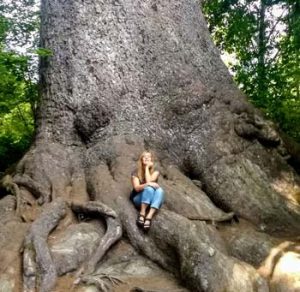Achieve your next “Ah-ha!” moment by cultivating a felt experience of success
The popularity of mindfulness in the West can be traced to Jon Kabat-Zinn, an American professor who studied the mindfulness practices and beliefs of several Buddhist teachers.
Kabat-Zinn used this knowledge to design a program that reliably combats the damaging effects of stress and chronic pain. The program, Mindfulness-Based Stress Reduction (MBSR), drew a correlation between pain avoidance and deeper levels of distress.
As Kabat-Zinn proved, when you ignore something, it doesn’t go away… it often gets worse.
Mindfulness was his solution. And today it exists as one of the preeminent therapeutic techniques for a wide range of applications within mainstream science and medicine.
But mindfulness isn’t limited to these applications, in fact in coaching: it’s becoming an essential tool.
What exactly is mindfulness?
Often when I ask this question in class, I often hear mindfulness compared to yoga or breath work. While these may be ways to become more mindful, mindfulness can be seen as two interrelated things. The first component is an awareness of one’s inner experiences, such as thoughts, thought patterns, feelings, and bodily sensations in the present moment. The second aspect is acceptance, developing the ability to witness and accept these inner experiences judgement-free.
This connectedness to oneself offers several important benefits.
For example, when you develop your capacity to be mindful and maintain regular mindfulness practice, you:
- Deepen your understanding of yourself and broaden your ability to hold a more holistic view of yourself, others, and life in general. This in return allows you to solve problems and live more by choice.
- Become more awake and aware of what’s happening in the moment and respond to life in better ways. Imagine feeling calm and clear-headed instead of overwhelmed or reactive.
- Quiet the inner conflict, reduce stress or anxiety, and become more relaxed in who you are and what’s happening around you. No more ruminating or over-thinking about all the what-ifs!
Pretty powerful outcomes, even on their own. And this is the short list. But when you add in Whole Person Coaching, the potential that mindfulness holds to cultivate positive, sustainable change increases greatly.
Whole Person Coaching is all about moving someone from the present situation to their desired outcome by working with the “whole” person – mental, emotional, somatic (physical), social, and spiritual.
Mindfulness tools help clients to come to know and understand their mindset and state of being. Building upon the insights they gain from this self-awareness, Whole Person Coaching continues their learning into action so they can authentically align their actions to what matters most to them while shedding any self-sabotaging behaviors or thought patterns.
Case Example: “Randy, the Executive Leader”
Depending on the client’s focus, mindfulness-based coaching, such as Whole Person Coaching, can take many forms. Desired changes may be personal, professional, or a bit of both.
Take, for example, my client “Randy” who is an executive leader in a global company. Randy was overwhelmed by the pressures of his work. He wanted to become more effective at time management and streamline his efforts. More to the point: he wanted to get back his life and return to the person he wanted to be at home.
Beyond the long hours at the office, Randy couldn’t turn his overactive, workaholic mind off at night. This caused him to have sleep issues, constantly waking up already thinking about work. This developed into a shorter temper that was affecting his relationship with others at home and work.
I could relate to Randy. My experience in the corporate arena, and specifically leading a group of 42 people, had a lot of the same markers. There was always something that needed my attention or someone needing my perspective or help. Being a leader and an integral part of a company’s success holds a lot of pressure. You are responsible. And most leaders take that seriously.
Simultaneously, it also seems to have rippling effects on their well-being, relationships, and overall happiness and satisfaction in life.
Admittedly, I was initially unsure if what I was about to offer would land with Randy.
As a Whole Person Coach, I knew the benefits of helping clients shift away from anxious thought patterns into a calmer body and clearer mind. But the flip side is that the pure act of having a busy mind had rewards of its own. For some, it feels productive and engaging ( …until there’s simply nothing left of you to give, that is).
With an abundance of tools rooted in somatic psychology and interpersonal neurobiology, I briefly shared my own experience with a similar situation.
I then invited Randy to consider working with his thought patterns to calm his mind and think more clearly. I explained that when the brain is in a more open and receptive state, we perform better. We make decisions that are well thought-out. Through this process, we arrive at better versions of ourselves.
He joked with me and asked if I was going to make him do yoga. I smiled and said, “Yoga is one of the things I do. Let’s figure out what will work for you…”
“Felt” results build an inner state of confidence and trust
As a Whole Person Coach, I co-create a coaching process that authentically aligns with the coachee. As such, there is no one way to get to a desired result. Each session is unique and custom to the client’s needs and desired outcomes.
This is important. If someone doesn’t see or feel a difference, they are more likely to discount the validity or effectiveness of what they’re doing to address a problem. Most people are tactile in nature. We want to see or feel the results.
Through coaching, Randy chose to develop a mental practice that allowed him to slow his busy mind. In turn, he discovered a “felt sense” of how powerful it was to be able to slow down to speed up.
Within a few weeks, Randy started to sleep better. This helped him feel more energized and alert at work. While he couldn’t completely stop his busy mind, he received a good taste of what was possible.
By our seventh session, Randy asked what else he could do to become more mindful, quickly followed by, “I don’t want anything too woo-woo.”
I agreed, tools with no woo-woo would be a perfect fit for him.
And I get it. Once upon a time, I didn’t believe in some of the holistic tools and techniques I now have in my toolkit. I didn’t understand how they’d work for me. I discounted their value… until I learned otherwise through direct experience.
In response, I offered Randy several tools from my Whole Person Coaching toolkit, allowing him to try each and see which would land. He chose to work with one called “Connecting the Thoughts,” and it’s something that works for a lot of leaders and businesspeople.
The reason it’s so successful is straightforward. It’s all about studying thought patterns as they shift to get to know your inner dialog. It offers a reliable way to uncover what you are really worried about. In my experience, it is quite transformative for most people!
During our six-month coaching relationship, Randy discovered multiple tools and techniques that worked for who he was. Today, he has a daily meditation practice that he custom designed. He tells me that it “feels right” for who he is. I’ve even heard he’s been sharing it with a few of his colleagues.
Coaching is best when your process works for your clients. And in my three decades of experience, I’ve found that it can only work when it’s built around who they are and what they need.
What’s in your coaching toolkit?
As a holistic coach educator at Coach Training World, I often hear students say they can’t use mindfulness or somatic coaching techniques in the corporate arena. Is that true?
Perhaps a truer statement is that they believe they can’t. So, they don’t even try. The concern of doing something that would be “seen as woo-woo” is often their response when I ask.
And for those who shared that they had “tried” yet did not achieve the outcomes desired or expected, the common theme was usually in the way they introduced the tools to the client. They hadn’t earned the client’s trust to experiment with something new.
I don’t know about you, but I like to understand how something works. This is especially true of the science and psychological research behind a personal development process, along with what to expect in terms of outcome.
So, here’s how you can help others to trust you to explore…
How to invite a client to explore a new way to achieve results
If you are someone who struggles with sharing new coaching tools or mindfulness practices with your clients, here is a step-by-step process you can customize to help you invite change in others:
- Present Evidence related to “WHY” you think this tool or process would be helpful.
Make a neutral observation about what you are hearing and observing with the client. For example: “I noticed that you used the words ‘tense’ and ‘aggravated’ when you described this situation…” - See if your “observation” lands.
Pause… (Wait for your client to respond to your offer before going any further.)- If your client doesn’t show curiosity and/or dismisses that your observation means anything – let it go. You’ll have another chance to reflect what you are sensing.
- If your client shows interest, ask if they’d like to explore this topic further. Listen to their words, while
watching their facial expression. If you don’t see a congruent “yes,” let it go. You’ll have another chance.
- Offer options.
If you’ve got a client who’s receptive, your next step is to offer a few options to consider, without attachment. For example: “There are a few ways we might explore this, X, Y or Z. Or perhaps there is another way that you are thinking about as well?
Cultivating awareness is essential. If the client can’t see or sense what is happening, you’re not opening the conversation for change. Maintaining choice is also essential to honoring the client and their agenda. After all, they are paying you to generate results. And a receptive client is going to help you get there.
REMEMBER: Have patience, compassion, and the willingness to let your client be who they are. You’ll not only develop trust but pave the way for transformational and sustainable change to follow!



